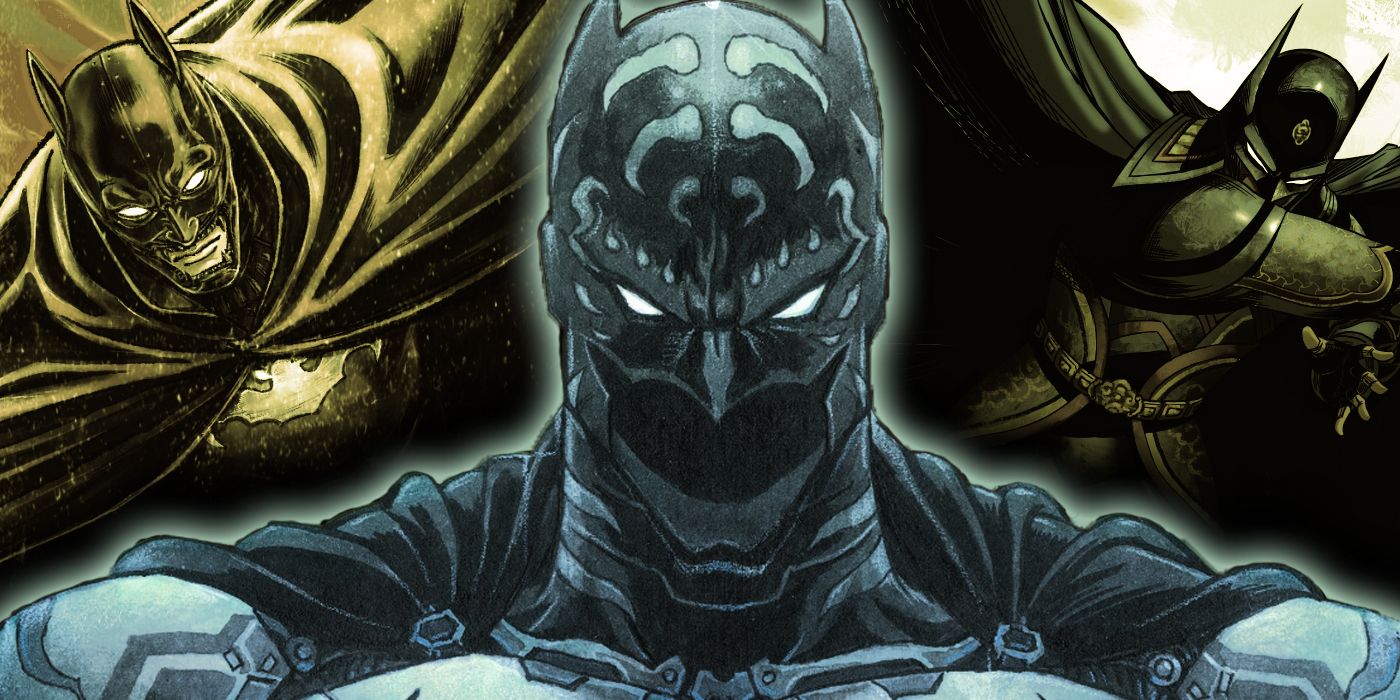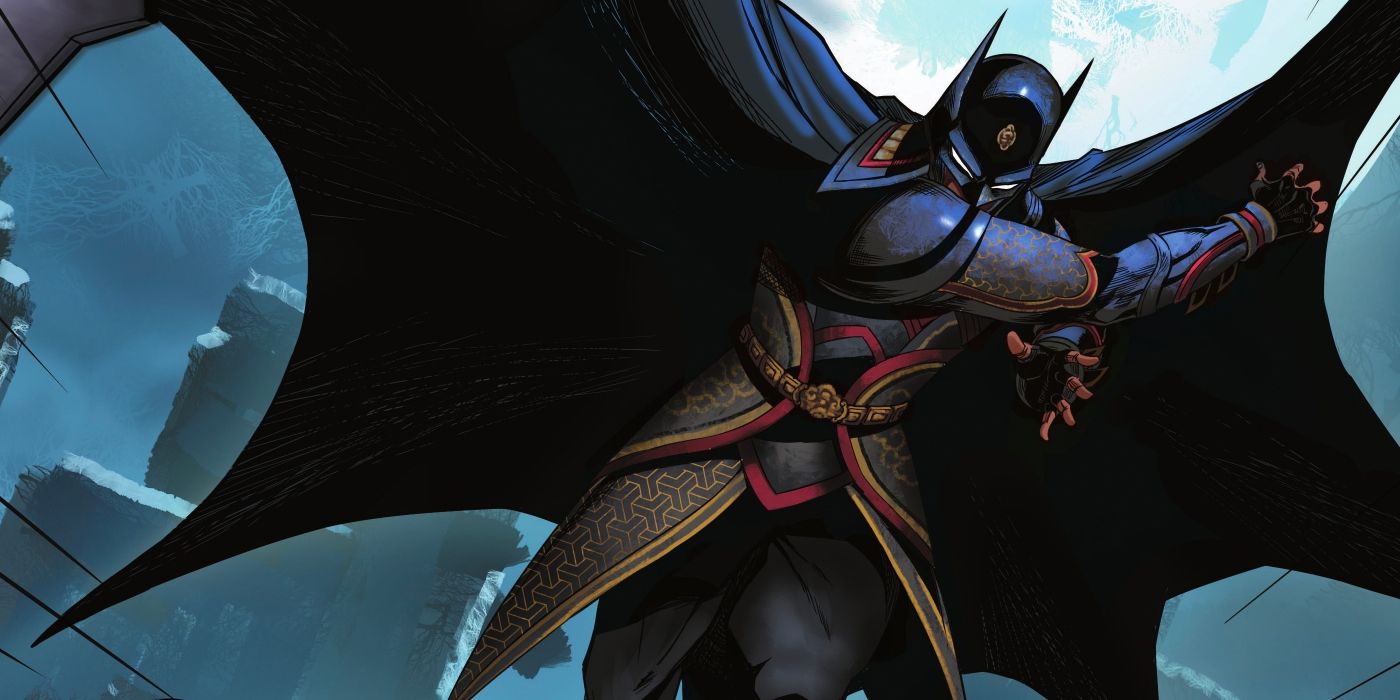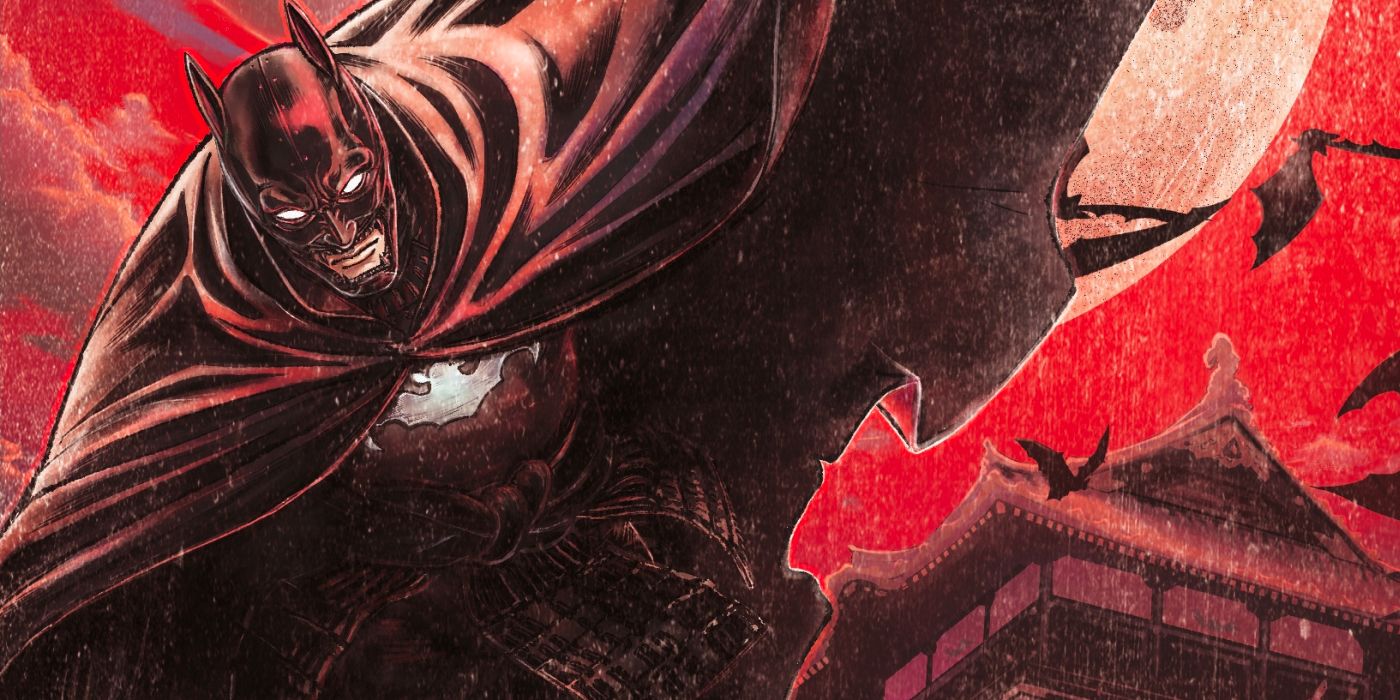WARNING: The following article contains spoilers for Batman: The World, on sale now from DC Comics.
Batman: The World is an anthology OGN that sees DC's famous caped crusader take on cases in different countries around the world in a series of short stories by creators native to those countries. In addition to exposing readers to various talents around the globe, the OGN also gives insight into how the dark knight detective is received in other countries.
While this informs the nature of stories throughout the special, this even manifests in the way Batman's iconic suit gets redesigned, most notably in the stories set in South Korea, China and Japan.
Batman Goes Full Tech in "Muninn"
In "Muninn" by Inpyo Jeon, Jaekwang Park, Junggi Kim and Dongmin Baek, Batman tries on a new technologically advanced Batsuit with memory-scanning capabilities, a technology that's recognized as a violation of human rights. Batman is unaware that the technology was incorporated into the suit when he set out to take out gangsters in South Korea. It's only after the sister of a man who served as a fence in Gotham tried to seek revenge on him that he realized the technology was planned to be used on him.
Though Batman using technologically advanced versions of his suit hardly unheard of, this one takes on a whole new meaning in South Korea. What the tiger-themed technological Batsuit in "Muninn" conveys is that Batman is a wealthy man with access to military-grade technology and resources. The fact the suit even has memory-scanning capabilities also comments on Batman not being beyond using questionable technology to help advance his cases, even if it means invading the privacy of others.
Batman and Panda Girl's Military Makeover
In "Batman and Panda Girl" by Xu Xiaodong, Lu Xiaotong, Qiu Kun, Yi Nan and Li Xiaobing, Bruce Wayne visits a hot pot restaurant in China on Alfred's recommendation and meets a teenage girl named Kiki, who happens to be a huge fan of Batman. Sometime during Bruce's visit, some shady men in suits attempt to evict the restaurant owner and various other shop owners from a street they now claim is owned by Wayne Enterprises. Not wanting to see her grandfather lose the restaurant he operated for 30 years, Kiki -- dressed as Robin -- goes to fight them, only to end up fighting alongside Batman when he intervenes.
For this story, Bruce Wayne uses a Batsuit that's inspired by the traditional military wear worn by Chinese soldiers prior to the early 20th century. Since Chinese soldiers were known to be highly advanced and powerful throughout their history, giving Batman a similarly styled suit helps convey those same ideas.
Batman Goes Rōnin in "Batman: Unchained"
In "Batman: Unchained" ("Shibarare nu Mono") by mangaka Okadaya Yuichi, Batman appears in Japan seemingly at the start of the Meiji era, a time in Japanese history that saw significant changes to Japanese society and culture as it opened its borders to avoid colonization by Western countries. As part of adapting to new ideas, local artists and newspaper reporters began reporting Batman sightings, which upset the local samurai who policed the area. This resulted in the samurai pursuing an artist who refused to comply with their demands, only to have a chance encounter with Batman.
In Okadaya's reinterpretation of the Batsuit, she gives Batman the look of a rōnin, a masterless samurai, to convey the idea of Batman as a vigilante who works outside the law. Since Batman is seen by the samurai as a "deserter" and a threat to their authority, the use of black armor helps to convey his defiance of them. The masterless samurai look also helps convey the idea of Batman being an urban legend, which is how he's also interpreted in the story in addition to being seen as a local hero.




